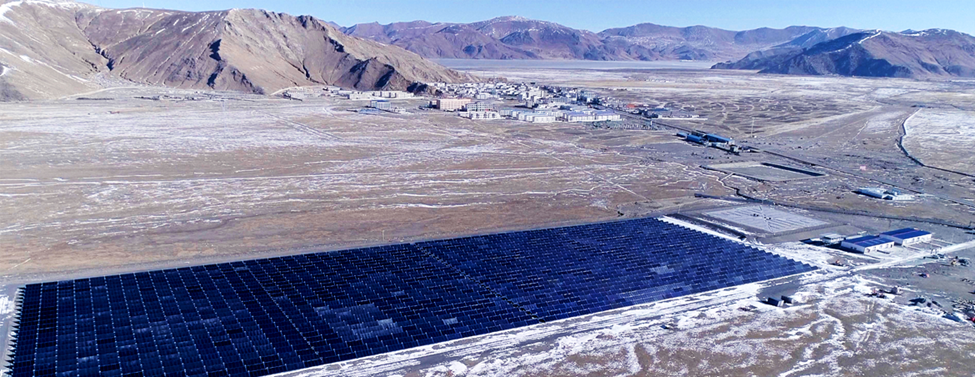
Tibet has an average elevation of more than 13,100 feet (4,000 m), reaching to 16,400 feet (5,000 m). At these heights, temperatures can remain below freezing all day in winter, plunging to –4°F (–20 °C). In 2018, Tibet’s first large solar thermal district heating system was designed and built at 15,000 feet (4,600 m) elevation on the Tibetan Plateau. It comprises a 236,800-square-foot (22,000-m2) solar collector field and a 161,500-square-foot (15,000-m2) reservoir for pit thermal energy storage (PTES), designed to store 700 MW of energy. The PTES, which stores water at temperatures of up to 194°F (90°C), helps bridge the gap between the seasonal production and use of energy, storing excess solar heat produced by the solar heating plant. This excess heat is transferred via heat exchangers to the PTES. When demand exceeds energy supply in winter, the stored energy is withdrawn from the PTES in the form of heat and supplied to end customers via the district heating system. The heating network, designed by Chinese/Danish joint venture Arcon-Sunmark Largescale Solar Systems Integration, supplies the citizens of Langkazi with energy, meeting more than 90 percent of the town’s heating demand.
The PTES, once constructed, needed to be fully lined with an appropriate geosynthetic system to prevent leaks and to help retain heat. Solmax delivered the geomembranes, geotextiles and geocomposites for the complex system in just seven months. This included planning and selection of the appropriate sealing system, production of the material, and prefabrication of system components. Continuous coordination with other trades ensured expert execution of the installation, including the welding together of the geomembranes and quality assurance. To optimize the use of the heat in the network, all the system components had to fit together perfectly. Solmax’s 1-mil (2.5-mm) High Temperature Liner, which offers resistance to weather extremes (hot summer/cold winter) and meets the demands of high-temperature operating conditions, was used to seal the reservoir. Solmax’s 60-mil (1.5-mm) High-density Polyethylene (HDPE) Color Geomembrane (a light gray), with its excellent stress crack and UV resistant properties, was selected to cover the PTES reservoir. Special protection and drainage layers, with a pressure-resistant geocore and appropriately dimensioned geotextiles, were a key part of the design.
 TEXTILES.ORG
TEXTILES.ORG


